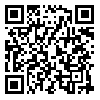Volume 15, Issue 1 (Winter-In Press 2025)
PTJ 2025, 15(1): 0-0 |
Back to browse issues page
Download citation:
BibTeX | RIS | EndNote | Medlars | ProCite | Reference Manager | RefWorks
Send citation to:



BibTeX | RIS | EndNote | Medlars | ProCite | Reference Manager | RefWorks
Send citation to:
Yousefian molla R, Hajiahmad T, Kazemi R. Upper Extremity Function and Quality of Life Following Long-Term Hand Biofeedback Electromyography Exercise in Elderly Stroke Patients. PTJ 2025; 15 (1)
URL: http://ptj.uswr.ac.ir/article-1-657-en.html
URL: http://ptj.uswr.ac.ir/article-1-657-en.html
1- Department of Sports Biomechanics, Central Tehran Branch, Islamic Azad University, Tehran, Iran.
2- Tabassom Stroke Rehabilitation Clinic, Tehran, Iran.
2- Tabassom Stroke Rehabilitation Clinic, Tehran, Iran.
Abstract: (1088 Views)
Purpose Biofeedback therapy is widely used as a treatment method for rehabilitating stroke patients. Our study aims to examine the effects of long-term hand biofeedback therapy on the upper limb function and quality of life of elderly people who have had a stroke.
Methods: 40 stroke patients were divided into a control group (CON) and an electromyography biofeedback training group. After two years of treatment, evaluations were performed to assess the impact of electromyography biofeedback training on upper limb function and quality of life for both groups.
Results: The results indicated that after two years of hand biofeedback, only the quality of life improved, while the function of the upper limb did not show significant changes (P≤0.05).
Conclusion: It can be concluded that long-term use of the biofeedback exercise method in stroke patients primarily impacts their quality of life rather than significantly affecting the function of their upper limbs.
Methods: 40 stroke patients were divided into a control group (CON) and an electromyography biofeedback training group. After two years of treatment, evaluations were performed to assess the impact of electromyography biofeedback training on upper limb function and quality of life for both groups.
Results: The results indicated that after two years of hand biofeedback, only the quality of life improved, while the function of the upper limb did not show significant changes (P≤0.05).
Conclusion: It can be concluded that long-term use of the biofeedback exercise method in stroke patients primarily impacts their quality of life rather than significantly affecting the function of their upper limbs.
Keywords: Cerebrovascular accident, Psychophysiological feedback, Function, Upper limb, Life quality
Type of Study: Research |
Subject:
General
Received: 2024/07/11 | Accepted: 2024/09/15 | Published: 2024/01/13
Received: 2024/07/11 | Accepted: 2024/09/15 | Published: 2024/01/13
Send email to the article author
| Rights and permissions | |
 |
This work is licensed under a Creative Commons Attribution-NonCommercial 4.0 International License. |




